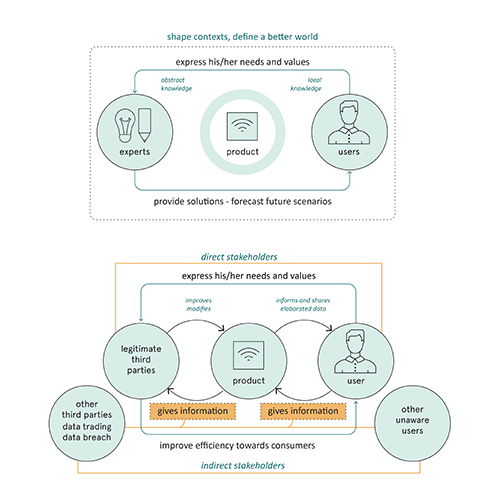Ethics of technology and design ethics in socio-technical systems
Investigating the role of the designer
DOI:
https://doi.org/10.7577/formakademisk.2201Abstract
This paper addresses many of the issues deriving from both design activity itself and the introduction of technology into everyday life. Relevant authors like Papanek (1984), Thackara (2005) and Manzini (2006) warned about the risks of design activity, as well as the consequences of bringing products to the world. Papanek defined design as the second most harmful profession one can practice, while Thackara claims that design is the cause of many troubling situations in our world (Mink, 2016). Manzini advocates the imminent need for a paradigm shift towards both a more sustainable design and way of living. In , Papanek pointed out that designers have a social and moral responsibility for the consequences of their innovations (Mink, 2016). For this reason, first we cannot ignore the advice, but also, we genuinely believe that designers should include ethical principles in their education. This paper seeks to address design ethics focusing on socio-technical systems and the new challenges introduced by both the Internet of things and artificial intelligence. The methodological framework combines the developed in human computer interaction () and computer ethics with a methodology based on need, requirements and performances developed in architecture. This approach is applied to the development of connected appliances, to conduct our reflections on an applied case study. Some guidelines are drawn at the end of this paper to guide designers in achieving a greater understanding of the ethical implications involved in the design process, establishing the responsibilities and limits of the designer.

Downloads
Published
How to Cite
Issue
Section
License
Authors who publish with this journal agree to the following terms:
- Authors retain copyright and grant the journal right of first publication with the work simultaneously licensed under a Creative Commons Attribution 4.0 License that allows others to share the work with an acknowledgement of the work's authorship and initial publication in this journal.
- Authors are able to enter into separate, additional contractual arrangements for the non-exclusive distribution of the journal's published version of the work (e.g., post it to an institutional repository or publish it in a book), with an acknowledgement of its initial publication in this journal.
- Authors are permitted and encouraged to post their work online (e.g., in institutional repositories or on their website) prior to and during the submission process, as it can lead to productive exchanges, as well as earlier and greater citation of published work (See The Effect of Open Access).
- The author(s) must manage their economic reproduction rights to any third party.
- The journal makes no financial or other compensation for submissions, unless a separate agreement regarding this matter has been made with the author(s).
- The journal is obliged to archive the manuscript (including metadata) in its originally published digital form for at least a suitable amount of time in which the manuscript can be accessed via a long-term archive for digital material, such as in the Norwegian universities’ institutional archives within the framework of the NORA partnership.
The material will be published OpenAccess with a Creative Commons 4.0 License which allows anyone to read, share and adapt the content, even commercially under the licence terms:
This work needs to be appropriately attributed/credited, a link must be provided to the CC-BY 4.0 licence, and changes made need to be indicated in a reasonable manner, but not in any way that suggests that the licensor endorses you or your use.



